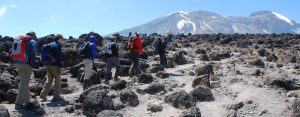Understanding Rubondo Island Weather
Rubondo Island National Park is a hidden gem located in Lake Victoria, Tanzania. This remote island is a haven for nature lovers and adventurers looking to escape the hustle and bustle of city life. One crucial aspect to consider when planning a trip to Rubondo Island is the weather. Understanding the weather patterns and factors influencing the climate on Rubondo Island can help visitors better prepare for their journey.
Weather Patterns on Rubondo Island
Rubondo Island experiences a tropical rainforest climate, characterized by high temperatures and abundant rainfall throughout the year. The island receives the most precipitation during the long rains season from March to May and the short rains season from October to December. During these periods, visitors can expect heavy downpours and muddy trails, making outdoor activities more challenging.
The dry season on Rubondo Island typically occurs from June to September and January to February. During these months, the weather is generally sunny and dry, providing ideal conditions for exploring the island’s diverse flora and fauna. The temperatures on Rubondo Island remain relatively constant throughout the year, ranging from 25°C to 30°C, making it a pleasant destination for outdoor adventures.
Factors Influencing Climate on Rubondo Island
Several factors influence the climate on Rubondo Island, including its location in Lake Victoria and the surrounding water bodies. The presence of the lake acts as a natural regulator of the island’s temperature, keeping it relatively stable throughout the year. The proximity to the equator also plays a significant role in shaping the climate on Rubondo Island, resulting in warm temperatures and high humidity levels.
Another critical factor influencing the climate on Rubondo Island is the prevailing winds. The island experiences seasonal wind patterns that affect the distribution of rainfall and temperature. During the wet season, the prevailing winds bring moisture-laden air from the Indian Ocean, resulting in heavy rainfall on the island. In contrast, the dry season is characterized by dry, dusty winds from the east, creating arid conditions on Rubondo Island.
Overall, understanding the weather patterns and factors influencing the climate on Rubondo Island is essential for planning a successful trip to this remote paradise. By considering the seasonal variations in rainfall and temperature, visitors can make the most of their time on the island and experience its natural beauty to the fullest.
If you are interested in exploring Rubondo Island National Park, Sunset Africa Safari offers guided tours to this unique destination. For booking requests and more information, please contact info@sunsetafricasafari.com.Embark on an unforgettable adventure and discover the wonders of Rubondo Island!


